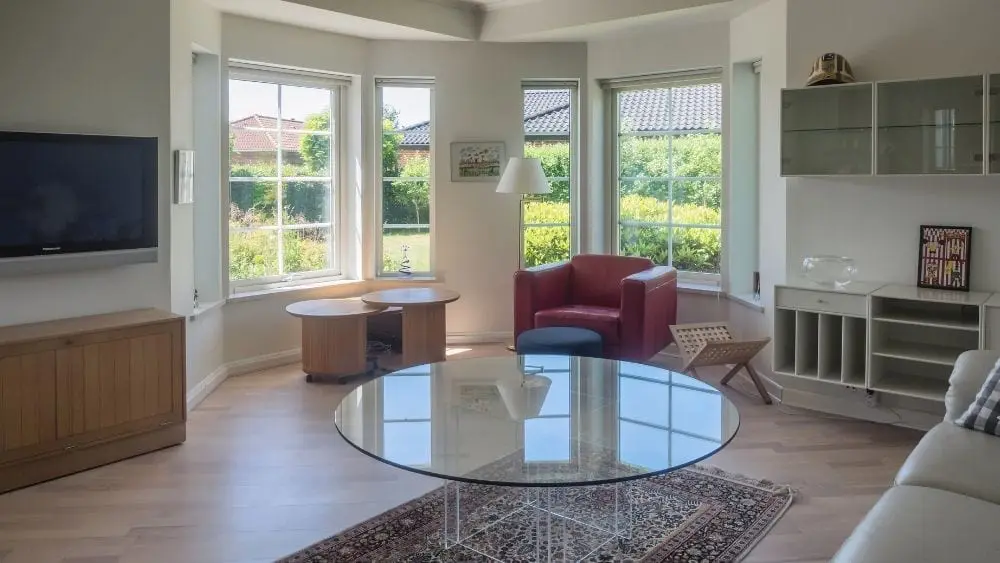
IKEA may have brought the Scandinavian design style to mainstream America, but it’s actually been around since the 1950s, when it came on the scene alongside the modernist movement that swept across Europe and eventually America. Although the term Scandinavia refers to Denmark, Norway, and Sweden, the Nordic countries of Finland and Iceland are often tossed into the mix, too, especially when talking about design.
Homes designed in Scandinavian style blend a variety of warm and cozy-soft textures, color contrasts, and soft hues to create a simplified, modern look that feels clean and casual.
Accessibility and affordability helped catapult its rise to popularity and thanks to a bevy of reproductions — whether it be Hans Wegner’s famous wishbone chair or Poul Henningsen’s blooming bud pendants — it’s still easy to find pieces that invoke the style.
If you’ve got a crush on all things Scandi, the following design principles can guide the way to creating the look in your home.
Leave Plenty of Elbow Room
Scandinavian design is often accused of being sparse and in a way, it is. However, it’s a form of minimalism that can actually be pretty cozy, as long as you pair the right elements together. The design calls for rooms that aren’t packed with furniture and accessories, but rather curated down to those that serve the greatest function and look and feel good, too.
If you’re an accessories hound (or simply a shopaholic) but you love this simplified design style, consider rotating your furnishings or even just your decor and accessories from time to time. This way you never get bored and everything has its moment to shine in the spotlight. Just make sure you have ample storage to make it work.
Look for Airy Furniture
One easy way to make a space feel roomy is to choose a few pieces of furniture with open backs or open weaves. The ability to see through objects tricks the eye into thinking there’s more room than there actually is, and it’s one of the hallmarks of Scandinavian design. Look for low-profile platform beds, sofas, and chairs with simple legs that are just high enough off the floor that you can see underneath them. The more open space the eye can take in, the bigger the room will feel.
Maximize Natural Light
Scandinavian countries have so little natural sunlight during the winter months that lighting a room right becomes paramount. Rather than rely on one central overhead light for each room, Scandinavian design encourages a mix of stand-alone light sources, each with their own level of luminosity. This better mimics the warmth and balance of actual sunlight. Simple, sculptural, and geometric, Scandinavian lighting sticks to light colors and washed woods, with pendants, table lamps, and floor lamps making up the golden trifecta. If you absolutely love big chandeliers and can’t imagine decorating without one, choose something as airy and fuss-free as possible that folds into the overall design.
Mix Light Wood Flooring with Cozy Rugs
Cold, short days call for a variety of warm, inviting textures, so it’s no surprise that homes done in the Scandinavian design have plenty of cozy, soft-to-the-touch textiles elegantly strewn about. So while rooms may be slightly sparse when compared to other design styles, creating a snug, inviting environment where you can instantly feel at ease is still very much key. The classic pairing of warm, light wood floors and plush rugs is signature Scandinavian, for example, the perfect combination of natural elements and soft grains.
Stick to a Soft Color Palette
Monotone, muted colors are the most synonymous with Scandinavian design. Whites and creams grace walls and together with tan and black create a neutral base. Bring in pops of color in a variety of earth tones and keep the shades soft — think blush, gray, sage, and slate blue. Nature is a great source for color inspiration. With limited access to it for many months of the year, Scandinavians often turn their homes inside out, welcoming anything that recalls the soothing, relaxing power of the natural world. Choosing an earthy color palette is one easy way to do that.
Add a Touch of Functional Geometry
Whether it’s a sectional sofa that comes with built-in storage or a coffee table with a tray top that lifts right up, the more functional a piece of furniture is, the greater its value. This commitment to functionality, accessibility, and affordability is a key principle of Scandinavian design.
Bring in the Plants
Nothing breathes life into a room like plants, and Scandinavian design makes the most of it. Brighten up any space with live plants, fresh flowers, or even just botanical accents. It’s a simple way to add another layer of nature to an otherwise minimalist space. Ferns, aloe, and snake plants share a sculptural silhouette that makes them favorites of Scandinavian design enthusiasts. Place them in ceramic pots or baskets to punctuate this natural touch.
Clear Up Clutter
With a “less is more” mantra, Scandinavian design is best suited for homeowners who are naturally tidy. Smart storage is a huge component of this design style in part to help contain clutter. Earthy baskets align with the look and feel of Scandinavian design while performing double duty as storage bins. Just toss a throw a pillow or throw over the top to hide what’s inside.
If your home lacks built-in storage or the ability to add it, consider the Euro-style closets found in cities like Stockholm. These portable storage cabinets come with shelves, drawers, and rods and have a built-in look that’s sleek and modern.
Whatever you do, keep your space comfortable. The Scandinavian design style emphasizes plenty of indoor family time, which means ample spots to relax and unwind.

Ana Connery is former content director of Parenting, Babytalk, Pregnancy Planner and Conceive magazines as well as parenting.com.
While editor in chief of Florida Travel & Life magazine from 2006-2009, she covered the state’s real estate and home design market as well as travel destinations.
She’s held senior editorial positions at some of the country’s most celebrated magazines, including Latina, Fitness and Cooking Light, where she oversaw the brand’s “FitHouse” show home.
Ana’s expertise is frequently sought after for appearances on “The Today Show,” “Good Morning America” and CNN. She has interviewed the country’s top experts in a variety of fields, including U.S. Secretary of Education Arne Duncan and First Lady Michelle Obama.
 8 Ways to Significantly Lower Your Home Insurance Premium
8 Ways to Significantly Lower Your Home Insurance Premium